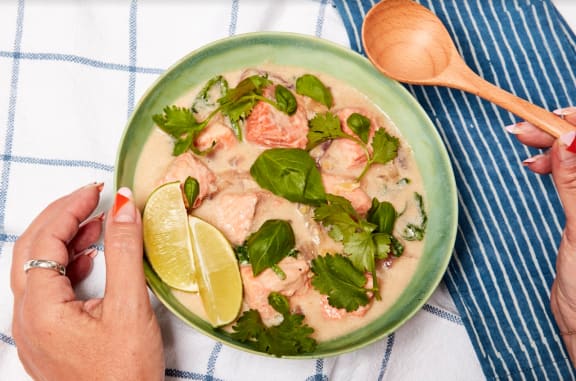
How to Lead with Your Ladle
April 2nd, 2020The Subtle Art of Soups and Stews
I’m what you might call a ladle lover.
Whether it’s bouillabaisse, bisque, broth, cioppino, curry, ramen, chowder, gumbo or stew, I’ve always been of the opinion that soups are the culinary equivalent of “all is well.” You see, soup isn’t just hot liquid to me — it’s a savory elixir of wellness, warmth and comfort. The kind of food that, when done right, can deliver actual emotional impact. It’s no coincidence that people eat soup when they’re not feeling well, or when they need a nourishing pick-me-up. It’s because a good soup is one of your kitchen’s most medicinal MVPs.
Besides how deeply satisfying a good soup can be, it has countless other benefits: it’s easy to make, can feed a lot of people at once, is a high source of fluids and a great way to consume many varieties of veggies. All of the above combined with some of our wild seafood, and you’ve got a one-stop pot of culinary wellness, the kind of meal that’s as perfect for a party as it is for a Netflix-and-sip kind of night.
Now that we’ve covered why I love soup, let’s talk about some of soup’s fundamental building blocks:
- Base - Your base is your flavor-center, the first level of your soup that will create a depth of taste. Think garlic, onions, green onions, fennel and shallots.
- Aromatics - These are your herbs, such as lemongrass, dill, cilantro or basil — the elements of freshness that liven up the liquid.
- Stock - I always have fish stock in the house, because it adds a deeper umami character to my soups than just plain old water. Pro tip: you can always use bottled clam juice as your seafood stock. It’s full of flavor and easy to find.
- Tone - Are you looking for a clear consommé or a heartier recipe that eats like a meal? Are you after opacity or translucence? These questions will help you decide what types of ancillary ingredients you may want to add or omit. Things like coconut milk, cream, or even flour — versus just a well-flavored broth.
- Heartiness - This is what I refer to as the muscle of your soup. All your tubers and squashes fall into the category. For this, I personally prefer the more exotic potatoes, like Japanese sweet potatoes, yuca, and kabocha squash.
- Accoutrements - Elements such as peas, corn, croutons or crispy onions — the kind of ingredients that add another layer of texture and color to the creative canvas of your pot.
- Essence - Cue your wild seafood, the heart of a perfect pescatarian soup or stew, the ingredient that will give it its fundamental character.
If you’re suddenly inspired to kick off your own souper-bowl season, here are some awesome seafood soup and stew recipes that have nothing to do with football and everything to do with sipping, slurping, stock and spoons.
Live wild,
Monica
Pictured above: Coconut miso salmon curry (inspired by this New York Times recipe) — a pink and green flavor-scape that can turn a drab rainy day into a sublime sippable paradise.





